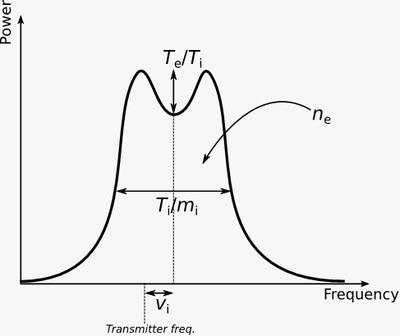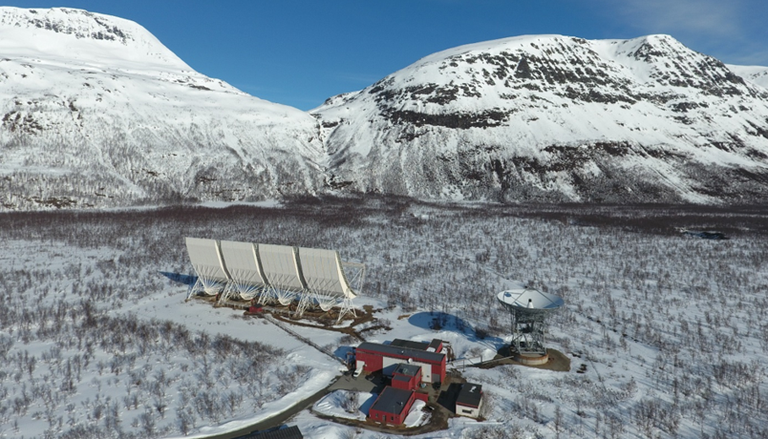Incoherent scatter radar
An incoherent scatter radar (ISR) system is a radar system that can measure the altitude dependence of a set of ionospheric observables. This set includes the electron density, the electron and ion temperatures, and the ion bulk drift velocity.
On a fundamental level, an incoherent scatter radar functions like any other radar: a radio signal is transmitted towards a target, and the returning signal is received and analysed. In the case of ISR the target is the ionosphere, or, to be more specific, the free electrons in the ionosphere. The free electrons scatter the radio signal and the signal scattered from each individual electron has a shift, positive or negative, in its frequency coming from the motion of the electron. Since the ISR receiver collects the scattered signals from an very large number of electrons, the total received signal is a distribution around the frequency of the transmitted signal based on the motion of the electrons.
The “incoherent scatter” in the name of the ISR method comes from the idea that all electrons would scatter the radio signal independently in an incoherent fashion, but that is not entirely true. The free electrons are instead partly following the motion of the much heavier ions in the ionospheric plasma. These ions moves according to both the large-scale flow in the ionosphere as well as to inherent waves in the ionospheric plasma. The latter motion gives rise to constructive interference of the scattered signal coming from wave-fronts, giving a very specific shape of the spectrum of the returned signal which depends on the ionospheric observables. The general goal of the ISR method is to determine this spectrum as a function of the scattering altitude.
One of the two main inherent wave-modes in the ionospheric plasma is the ion-acoustic mode. The received spectrum from this wave-mode is called the ion line, and it is typically double-peaked with a width of up to a few tens of kHz.

Sketch of the ion line spectrum, and the information that can directly be deduced from it.
In the ion line spectrum, the total returned power depends on the number of electrons that have scattered the signal and therefore gives an estimate of the ionospheric electron density. The width of the spectrum depends on the ion temperature, and the overall shift of the spectrum corresponds to the bulk drift motion of the ions in one direction. Finally, the “peakiness” of the ion line spectrum is a sensitive function of the ratio between the electron and ion temperatures. Further observables, such as the ion composition, the conductivity, and the neutral temperature, can be calculated by making more assumptions about the plasma.

Example of ISR data from EISCAT (31 January 2022). The panels show from the top electron density, electron temperature, ion temperature, ion drift velocity and radar parameters as function of time and altitude.
The other main inherent wave-mode is the Langmuir wave. This mode gives rise to sharp peaks in the received spectrum a few MHz in both directions from the centre frequency of the ion line. These are called the plasma lines, and their off-set frequencies are very sensitive of the electron density and can therefore be used for a good estimate of it. Thus, it can be used as a calibration tool for the ion line analysis.
The scattering from free electrons is a very weak scattering process, which means that most of the signal transmitted by the ISR system goes straight through the ionosphere and is lost (at EISCAT, for instance, only about one part in 1021 comes back). This is why ISR systems have very powerful transmitters, combined with sensitive receivers to collect as much return signal as possible. A more descriptive name for ISR systems is thus High Power Large Aperture (HPLA) radars.

View over the EISCAT ISR site in Tromsø. The rectangular (120 m x 40 m) VHF antenna, and the UHF antenna (32m parabolic) are at the centre of the picture. (Photo: Craig Heinselman.)
For questions, please contact outreach@pithia-nrf.eu
